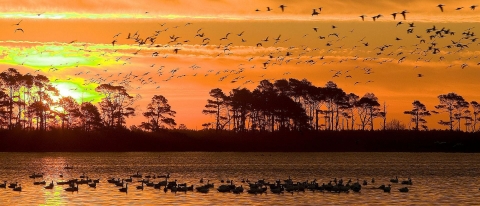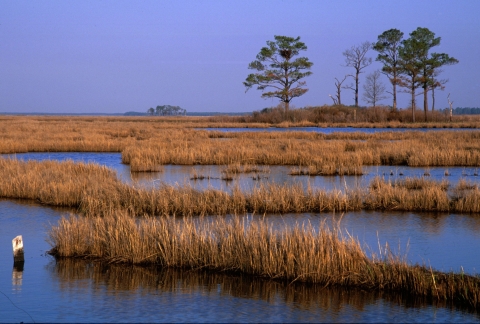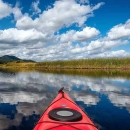Management and Conservation
Strategic Decision Support
The realty team provides strategic decision support, ensuring that tax dollar investments go to the highest conservation use. The team uses the Targeted Resource Acquisition Comparison Tool (TRACT) to assess potential additions to the Refuge System. TRACT provides biological rankings that help Service management identify refuges where proposed land acquisition can make significant contributions to conservation. TRACT informs annual Land and Water Conservation Fund budget decisions. The team also provides policy and guidance associated with acquisition of interests in land through lease, purchase, exchange, donation or withdrawal from the Public Domain, or by management agreement.
Land Surveys
Land surveys ascertain the physical location of lands under Fish and Wildlife Service administrative jurisdiction, or lands proposed for acquisition. This provides positive identification of the land, both on the ground and by written legal description. In the management of Fish and Wildlife lands, certainty of ownership is an important aspect, in which accurate, up-to-date land surveys contribute to the overall success of the Service in meeting its mission responsibilities.
Whether by review of the completeness of a land description in the land acquisition process or the physical survey of the lands to determine a precise location on the ground and an accurate acreage, land surveys generate required information to ensure good title to the lands of the Fish and Wildlife Service. Properly established boundaries provide for better management of resources by accurately identifying the landscape's extent. The Service cannot provide effective management to protect our land unless we know precisely where the land is located.
Cartography
Cartography is the art and science of making maps. We rely increasingly on maps that portray the surface of the earth as well as the oceans. The first wildlife refuge maps were drawn by hand, and reflected little more than a dashed boundary line surrounding the land and water being protected. The days of using ink pens to create maps are mostly past. Accurate and detailed maps of our wildlife refuges are needed more than ever.
Today's Fish and Wildlife Service cartographers use computers and special software to produce maps that show refuge boundaries, land ownerships within those boundaries, wildlife habitats and refuge management plans. Employing geographic information system (GIS) technology, "intelligent" maps link to databases that provide information about lands that the Service manages as well as lands proposed as future refuges.
Revenue Sharing
The Fish and Wildlife Service makes annual payments to counties and other local government units for these tax-exempt federal lands through its Refuge Revenue Sharing program.
Right-of-Way Permits
The realty team processes applications for right-of-way permits across Service lands. Federal Regulations at 50 CFR 29.21 establish the Service’s right-of-way application procedures; applicants should contact their local Refuge and regional realty office for more information.
Our Programs
Realty is a division of the National Wildlife Refuge System.




